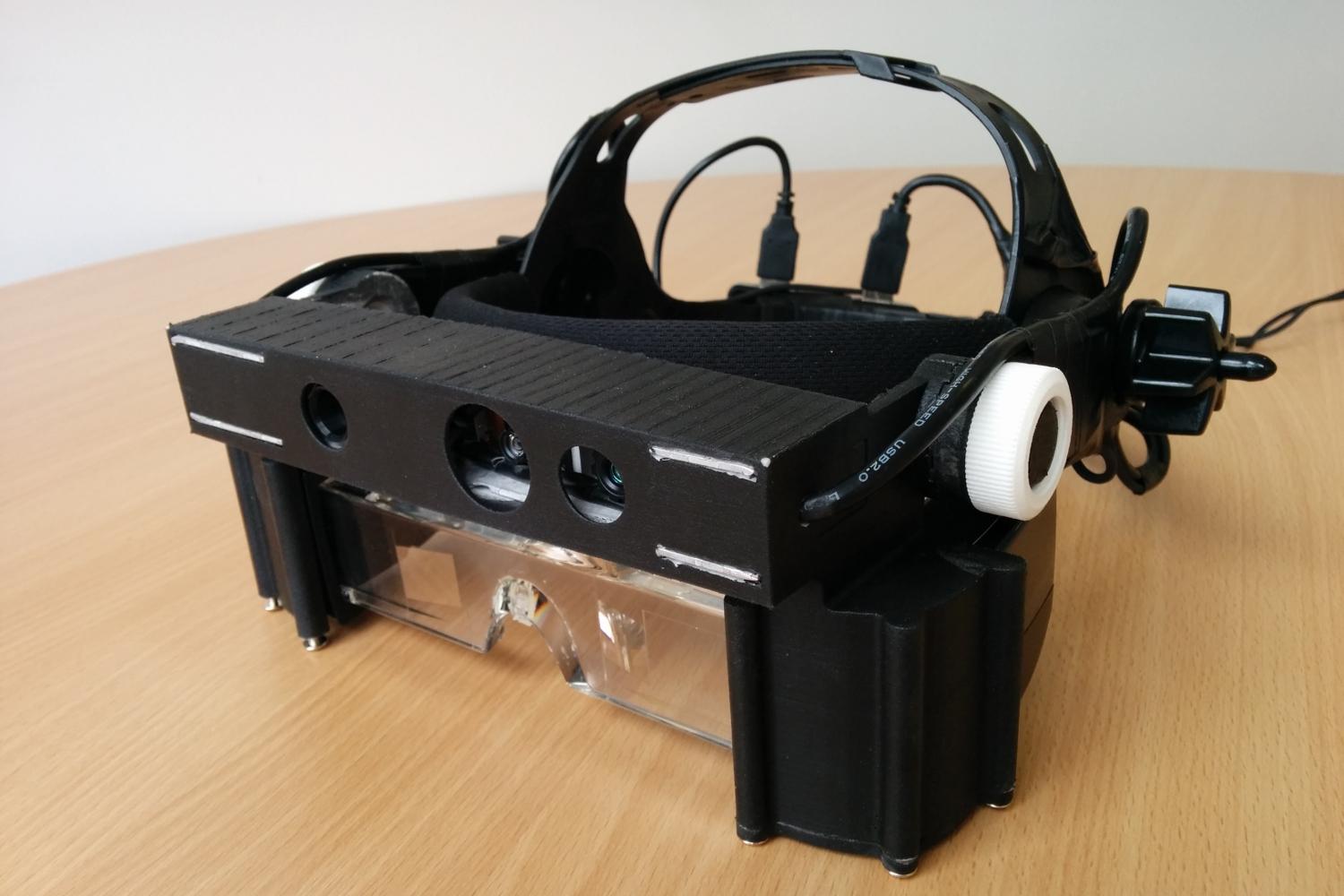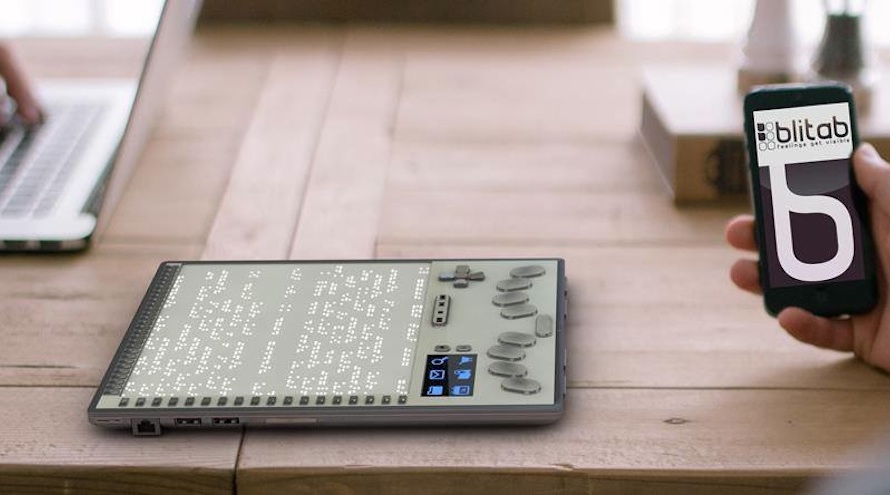Wearable Technology for Low Vision: Making Everyday Tasks Easier
Wearable Technology for Low Vision: Making Everyday Tasks Easier
Blog Article
A Guide to Life-Changing Assistive Innovation for the Blind and Aesthetically Impaired
The improvement of assistive modern technology has ushered in a transformative era for people that are blind or aesthetically damaged, offering tools that boost freedom and improve daily experiences. Innovations such as wise navigation gadgets and AI-driven applications are redefining exactly how individuals connect with their surroundings, while accessible analysis options and clever home modern technologies promise to further elevate the quality of life.
Smart Navigation Devices
Smart navigating tools are revolutionizing the means people who are visually damaged or blind connect with their atmosphere. These advanced innovations, which incorporate GPS, audio feedback, and haptic signals, give customers with crucial information concerning their environments, boosting their freedom and mobility.
One popular instance is using smart walking canes geared up with sensors that discover barriers and provide real-time responses via resonances or audio hints. These devices enable customers to navigate complex environments, such as busy roads or crowded public areas, with enhanced confidence. In addition, wearable tools, such as smart glasses, are being established to help in acknowledging faces, reading message, and identifying items, even more augmenting the individual's spatial understanding.
Furthermore, clever navigating tools are significantly including artificial intelligence to assess data and adjust to individuals' preferences. This customized technique not only boosts navigation efficiency however also fosters a sense of empowerment among users. As modern technology proceeds to development, the capacity for clever navigation devices to create a much more inclusive and easily accessible world for individuals that are blind or visually impaired stays promising, ultimately improving their day-to-day experiences and communications.
Ingenious Mobile Applications
Mobile applications are becoming powerful tools for assisting people that are visually damaged or blind, offering a variety of capabilities that improve daily living. These applications harness progressed modern technology to promote day-to-day jobs, improve access, and promote independence.
One group of ingenious mobile apps concentrates on aesthetic acknowledgment. Applications like Be My Eyes link customers with sighted volunteers using video calls, enabling real-time assistance for jobs such as reviewing tags or browsing unfamiliar environments. Similarly, apps like Seeing AI make use of man-made knowledge to explain surroundings, reviewed message, and recognize items, giving customers with important information at their fingertips.
Another considerable area is navigation and positioning. Applications such as Aira and Neighboring Explorer give audio support, aiding users browse urban areas effortlessly. They provide personalized support, permitting a more positive expedition of the atmosphere.
Moreover, wellness and health applications provide to particular requirements, such as drug administration and physical fitness monitoring. These applications intend to foster an alternative technique to well-being, ensuring that users can preserve their health independently.
Wearable Assistive Tools
Wearable assistive tools represent a considerable advancement in modern technology designed to sustain individuals who are visually damaged or blind. These devices improve movement and independence by providing real-time comments about the surrounding environment. Amongst one of the most significant wearable innovations are clever glasses outfitted with video cameras and sensing units, which can determine obstacles and relay essential info via audio hints.

An additional cutting-edge option consists of wrist-worn devices that use ultrasonic waves to discover barriers and provide navigational support. These devices commonly feature personalized settings, permitting individuals to customize the notifies to their details needs.
The integration of expert system in wearable assistive modern technology is likewise noteworthy, as it constantly improves the accuracy and responsiveness of these devices. In general, wearable assistive gadgets are changing the lives of the aesthetically impaired and blind, fostering greater freedom and boosting top quality of life through ingenious options.
Accessible Reading Solutions
Obtainable analysis options play a vital role in allowing individuals that are aesthetically damaged or blind to engage with text across different formats. These services incorporate a variety of technologies and devices created to boost analysis experiences, from standard print products to electronic material.
One prominent remedy is Optical Personality Recognition (OPTICAL CHARACTER RECOGNITION) technology, which transforms printed message into electronic style, permitting individuals to listen to or check out the web content using display this visitors. Additionally, specialized e-readers equipped with text-to-speech capacities offer personalized reading experiences, making it possible for users to readjust font dimensions and background shades for enhanced presence.
One more effective technique is braille screens, which provide tactile feedback by transforming electronic text into braille. This permits people to check out touch, fostering better freedom and accessibility to literary works. Additionally, mobile applications made for reading scanned records or publications can equip individuals with instantaneous access to a large collection of products.

Smart Home Technologies
Smart home modern technologies have revolutionized the method individuals who are blind or aesthetically impaired connect with their living atmospheres, enhancing both freedom and safety and security. These ingenious solutions leverage automation and connection to develop an obtainable living area customized to the demands of users.
Smart audio speakers and voice-activated aides provide hands-free control over numerous tools, enabling users to readjust temperature level, security, and lighting procedures with straightforward voice commands. This performance decreases dependence on sighted aid and promotes a feeling of autonomy. Furthermore, clever lighting systems can be tailored to supply acoustic comments or tactile cues, making it possible for individuals to browse their homes better.
In addition, protection systems equipped with smart cameras and sensing units can send out real-time alerts to users, improving personal safety and security without demanding aesthetic confirmation. Automated door locks offer assurance, allowing users to protect their homes effortlessly.
Integrating smart home modern technologies not only improves day-to-day living however likewise encourages social communication via connected tools - Assistive technology for the blind. With recurring innovations in assistive modern technology, the future appears appealing, as even more services will arise to further empower individuals who are aesthetically damaged or blind, making certain an extra inclusive and independent lifestyle
Final Thought
In conclusion, the advancements in assistive innovation for the blind and aesthetically impaired stand for a considerable leap toward improving freedom and top quality of life. Smart navigating tools, ingenious mobile applications, wearable gadgets, accessible reading options, and smart home technologies jointly cultivate a comprehensive setting. This combination of innovation not only enhances flexibility and everyday living yet additionally equips individuals to involve totally with their environments, promoting better freedom and participation in society.
Technologies such as smart navigation gadgets and AI-driven applications are redefining just how users interact with their surroundings, while accessible reading options and wise home innovations assure to further elevate the quality of life. As innovation continues to advance, the potential for smart navigating devices to produce an extra obtainable and inclusive world for people that are blind or aesthetically damaged stays encouraging, inevitably reshaping their everyday experiences and interactions.
Wearable assistive devices represent a substantial improvement in modern technology created to support people that are blind or visually damaged. Amongst the most significant wearable innovations are clever glasses furnished click to find out more with sensing units and cams, which can determine barriers and relay critical info with audio signs.
Smart navigating devices, ingenious mobile applications, wearable devices, easily accessible analysis options, and smart home innovations jointly foster an inclusive setting.
Report this page